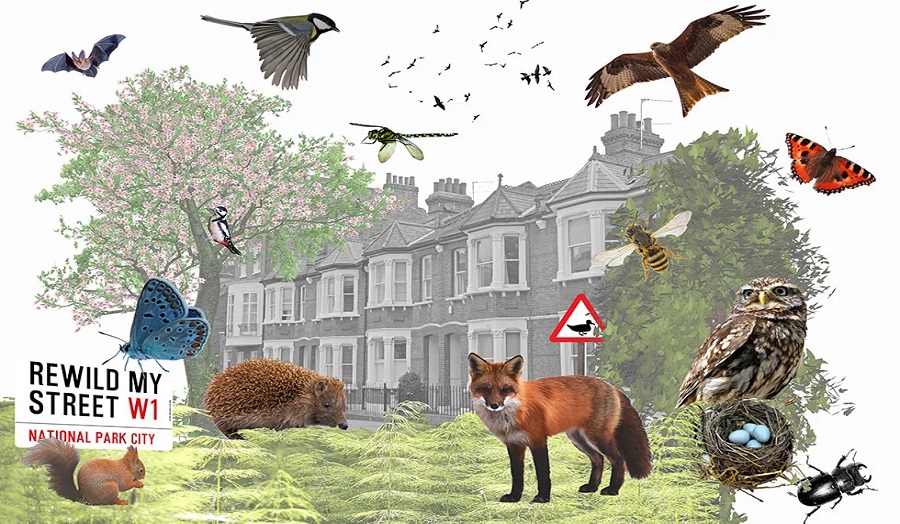Siân Moxon’s rewilding project receives coverage in the esteemed magazine, Time Out London.
Date: 2 August 2022
Siân Moxon, a Senior Lecturer and Sustainability Coordinator in London Met's School of Art, Architecture and Design, is an expert in sustainable design and is leading the School's response to the climate and ecological emergency through Architecture Education Declares.
Siân’s research project, Rewild My Street (RMS), uses architectural drawings to inspire and empower residents to transform London’s streets for wildlife. The drawings are part of a design toolkit which provides recommendations for products and activities to attract wildlife, and brings together expert information on urban species and habitats.
In the Time Out feature, Siân emphasises that even if you haven’t got a garden, you can still have an important ecological impact. “Having a garden in London can be a luxury and a rarity, especially if you’re living closer to zone one. But even if you live in a tower block, you can still plant a window box which will be great for pollinators, such as bees,” she comments.
Siân also told the magazine how she’s used her own advice in her own garden, which has been 'transformed her own small north London garden into an oasis for frogs, foxes and hedgehogs, with piles of logs, multiple bird boxes and a pond. Her fences are covered by climbing plants and they incorporate gaps to allow wildlife to easily come and go'.
The importance of rewilding was highlighted at this year’s RHS Chelsea Flower Show, with the winner imagining 'a beavers’ dam on a brook with near-pinpoint ecological accuracy'.
Rewilding London is an ongoing project, which requires community led programmes. “The idea is if lots of people do this, there will be more corridors for wildlife to travel along. Parks and gardens in the built-up areas of London work as ‘stepping stones’ connecting to larger wildlife areas in the outskirts. Then, to be really effective, London councils will have to team up with neighbouring local authorities to try and encourage cross-boundary nature corridors. The eventual result? Free-roaming wildlife throughout all of London and the UK”.

